What are facilitation skills and how to improve them?

Facilitation skills are the abilities you need in order to master working with a group. In essence, facilitation is about being aware of what happens when people get together to achieve a common goal, and directing their focus and attention in ways that serve the group itself.
When we work together at our best, we can achieve a lot more than anything we might attempt alone. Working with others is not always easy: teamwork is fraught with risks and pitfalls, but skilled facilitation can help navigate them with confidence. With the right approach, facilitation can be a workplace superpower.
Whatever your position, career path, or life story, you probably have some experience in facilitation skills, although you might not think of it this way.
Chairing a committee, getting the neighbors together to clean a park, playing music with your friends, organizing a wedding celebration, observing a group of kids play and suggesting something they might want to do next: there are many unexpected corners where you might be already practicing facilitation skills.
When we start to recognize and meaningfully improve these key facilitation skills, that’s when we can begin to achieve real change in how we work together with others.
In this article, we will look at what facilitation skills are, including practical abilities (such as timekeeping during meetings), life competencies (such as communication skills), and components of the facilitation mindset (such as trust, and neutrality). Read on to explore what facilitation skills are, how they could be useful in your life and work, and ideas on how to practice them further.
Why are facilitation skills important?
Facilitation skills are invaluable in many situations, such as:
- managing team meetings;
- improving participation and engagement at events and conferences;
- increasing clarity in group processes, getting everyone on the same page;
- including a diversity of opinions and stakeholders;
- evaluating choices, creating action plans as a group;
- ultimately, supporting the group in making actual, effective progress toward its goals.
Facilitation skills are about being great at collaboration. There is very little we can actually achieve on our own: facilitation skills help make teamwork more effective, break communication barriers, and ultimately help us realize more ambitious goals. An effective facilitator can help encourage participation and involve everyone in the process – by learning and developing these skills, you too can empower the group to reach a successful outcome.
Without facilitation skills, energy, resources and momentum can easily get lost and wasted. This might happen through unresolved conflicts, or because of confusion over next steps, or low motivation. For anyone working with groups, facilitation skills are useful, but for leaders, they’re practically a necessity.
When are facilitation skills used (and by whom)?
There is an ongoing debate in the facilitation community around whether facilitation is a profession or a set of skills that can be put to use in any context. The answer, ultimately, is both. Myriam Hadnes, the host of the Workshops Work podcast, put it well in this interview with Sarah Norton and Steve Ray from the Australian Groupwork Centre: if people know how to cook, does this mean they no longer need chefs and restaurants? It’s actually the opposite: the more cooking skills we have, the more likely we are to fully enjoy a chef’s craft.
Viewing facilitation as a craft is a helpful framework. If facilitation is a craft, anyone can learn it. At the same time, people who devote their whole career to facilitation will achieve higher levels of mastery.
In practice, this means imagining a future in which most people know how to apply facilitation skills to their work, as well as when to call in someone more experienced when need be.
To learn more about what professional facilitators do and what you should know before hiring one, you can check out our blog article on What is a Facilitator and What do They Do.
In practice, facilitation skills are most often used when designing and then leading groups through a collaborative process such as a workshop.
SessionLab makes it easy to build a complete agenda in minutes. Start by dragging and dropping blocks, add your timings and adjust with ease to create a minute-perfect session.
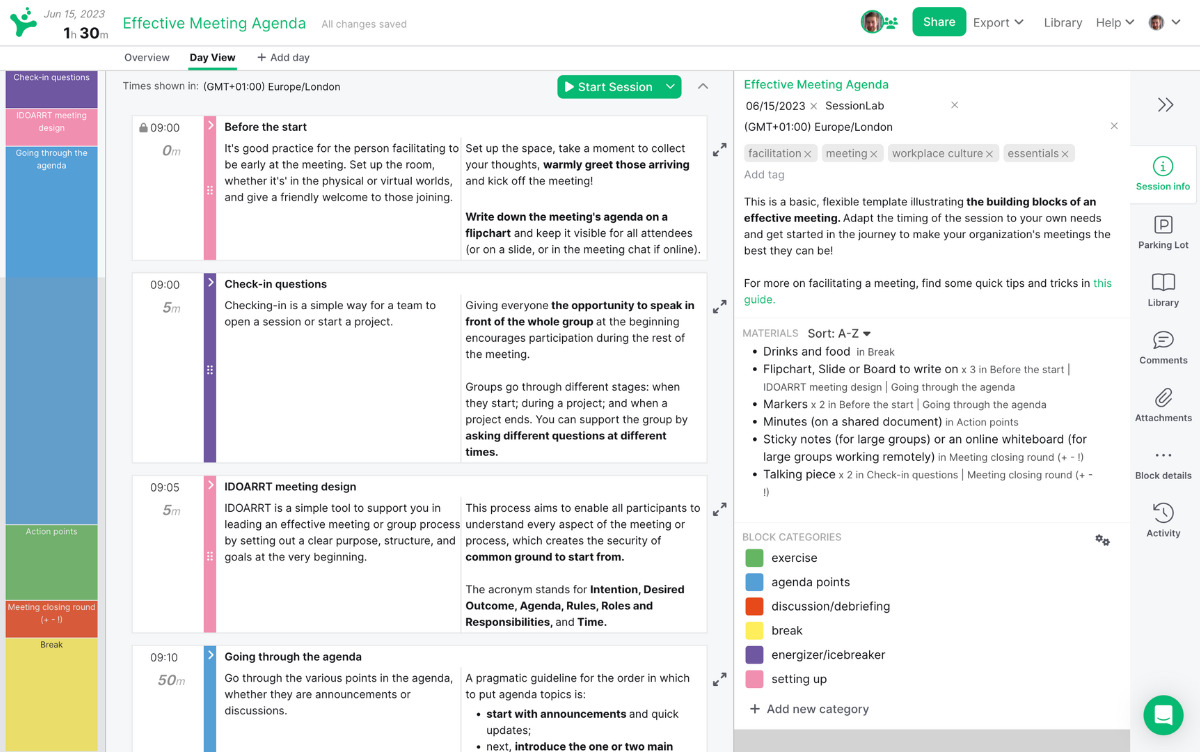
What are facilitation skills?
Facilitation skills are a set of competencies and soft skills that enable professionals to design and facilitate group processes effectively.
The version of facilitation most of us are familiar with includes using activities, tools, and methods in a workshop setting. Experienced professional facilitators develop an extensive toolkit of proven-to-work processes, activities, and templates for this purpose.
Facilitation is also about all the backstage work of preparing and designing meetings, events, and activities, shaping agendas that will provide the structure for the entire group to move along and achieve its desired goals.
At the same time, there is more to facilitation than meets the eye. Below the surface lie life competencies and skills related to communication, time management, conflict resolution, project management, listening, and more. An effective facilitator can do much more than facilitate meetings and solve problems! Facilitation skills are the sum of all these competencies.
In the next paragraphs, we will go through some of the essential facilitation skills, through the lens of the “head, hearts, and hands” framework.
Having defined facilitation as a practical craft, we’ll start with the hands: what are the practical facilitation skills you need to master when working with a group?
Then we will look at what could also be called life competencies, the “head” of facilitation: what do you need to know? This is the realm of frameworks that will help you understand the concepts behind group dynamics.
Last but certainly not least is the “heart” of facilitation: the facilitative mindset, which is really key to getting great results when working with your groups.
Here is a list of what we’ll be looking at. You probably have some of these skills already: which are you strong in? Which would you like to further develop?
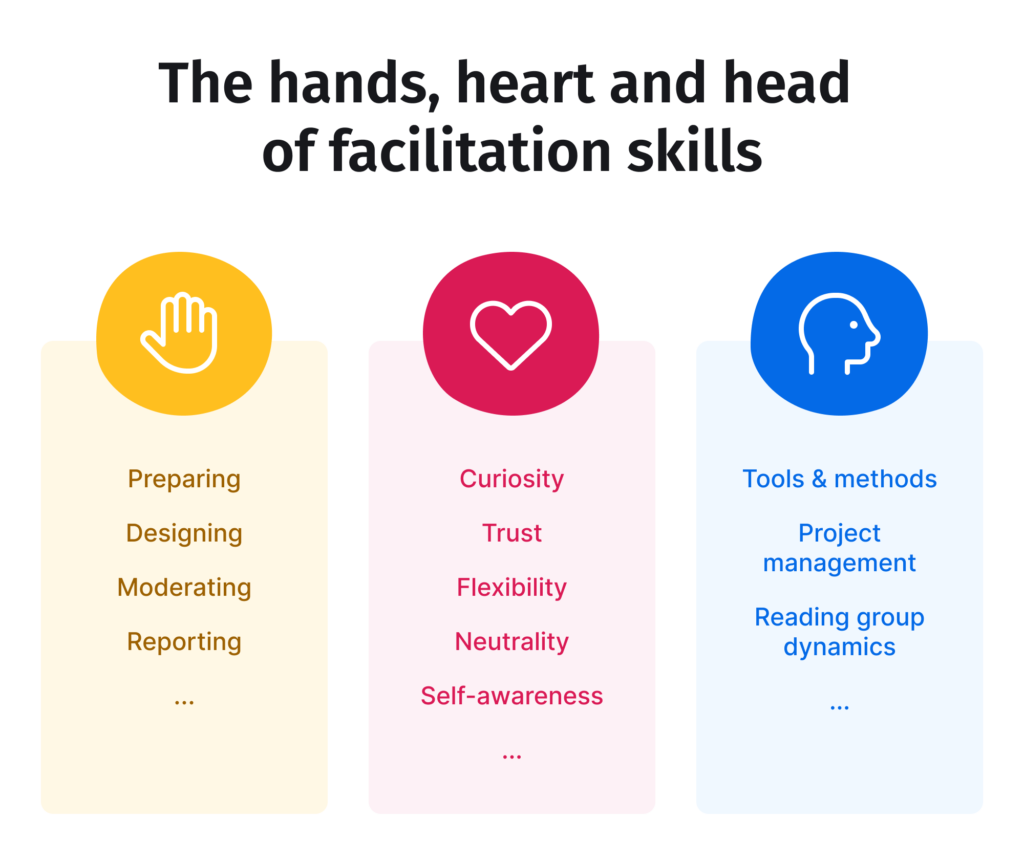
Practical facilitation skills
The best way to learn and improve your facilitation skills is to practice, practice, practice. Meetings and events are the most logical place to start. Consider how your meetings are already going. What works well? What needs improvement?
We have collected below the most important practical skills that a facilitator needs, divided into two parts of the facilitation process. What would the ideal state of your meetings and events look like? These are the facilitation skills that can help you get there!
Let’s review which skills are required for a facilitator to perform effectively in each step of the process.
Facilitation skills for preparing a meeting
The general rule of thumb says that preparing a group process/group facilitation usually takes twice as much as the actual net meeting time where the facilitation takes place.
At the design stage, we define the needs and outcomes of the process and create a structured agenda of activities. Foresight is certainly part of the facilitation mindset! To learn more about workshop design, here is an article that goes through the process step-by-step.
Now let’s see what specific skills you will need for the planning process and to help design anything from a training session to a workshop like an expert facilitator.
Asking powerful questions
Any meeting or workshop needs to have a clearly defined goal, and as a facilitator, you need to be clear about the objectives. Ask questions to understand the underlying motivation behind a meeting and develop a consensus with the client about their goals. What outcomes do they hope to achieve? Why is the meeting being called? Who should be there? What will define success?
You might go further by creating a needs assessment to understand what the different stakeholders of an event might want in order to come up with a solution that meets your client’s needs. A hallmark of effective facilitation is clarity and purpose.
Process design
When you know the outcomes you want to achieve, it is time to find the right process for that. But what does it mean to “find the right process’?
- As a facilitator, you are helping the group think together. So, finding the right workshop or meeting process is about finding the structure that will help groups to think and work together effectively. This may be an open discussion, or a structured one, where you as the facilitator use different techniques to help participants to exchange viewpoints, analyze issues, generate ideas and make decisions.
- A common structure for group facilitation discussions is to apply Divergent and Convergent Thinking: First, you enable the group to broaden their horizons and generate new ideas or solutions. Then you help them narrow down the set of options they have created to make a final decision.
- Finding the right process also includes considerations around what will keep participants active and engaged. Group engagement is something the facilitator should be conscious of throughout the workshop. Often times you will elect to use specific facilitation techniques to keep your session interactive and keep participation high. You might set ground rules that make it easy for group work to take place effectively or use activities expressly for encouraging participation.
- Keep in mind the desired outcomes so you can design a suitable process. A workshop facilitator must pay particular attention to this in order to ensure the entire workshop can help even small groups move towards a productive outcome.
- If you (and the group) have multiple desired outcomes, make sure that you have a clear process to reach each of them. This can be where your group facilitation skills can be tested if you haven’t carefully constructed a process for your workshop or meeting. Remember that a facilitator needs to prioritize and have realistic expectations of the group. Be critical in this stage of the design process so that your facilitation does not suffer from being overwhelmed during the meeting or workshop.
Agenda planning
Congratulations, you have a process! Next, you need to make sure that your process works with the reality of time constraints, logistics, group dynamics, and the attention levels of people joining you (which are also different whether online or in person!).
Proper planning is one of your most important facilitation skills. Your facilitation practice will benefit from nailing this stage and learning from it for future workshops and meetings.
There are several factors to consider when planning a workshop agenda:
- Time constraints: A session has a start time and an end time, and participants usually expect you to respect the end time.
- Breaks: If your session spans longer than 90-120 minutes, you should likely include some breaks in your session, for instance, coffee breaks or a lunch break.
- The number of participants: Group discussions have a natural limit and this must be taken into account for anyone involved in group facilitation. Above a certain group size, it gets difficult to have a discussion where everyone is involved. If your group is bigger than a certain size (this will vary by type of exercise or discussion), you will probably need to split your participants into multiple groups and run some exercises and discussions in parallel. Naturally, this takes an increased amount of time and will benefit from co-facilitation. If you have bigger groups, consider clarifying:
- If you want breakout sessions to run parallel tracks in your session
- How different sub-groups will report back to the whole group
- Break the ice: Are participants familiar with each other or not? This, and the nature of your sessions, determines how much effort will be needed to break the ice and allow people to get to know each other. Knowing who is in the room and meeting at a personal level are necessary steps to build enough safety and trust for a productive session.
- Interaction mix: There are different types of interaction, ranging from one-to-many forms of presentations to individual work, small group and large group discussions. A healthy balance of different interaction types throughout your session will help participants to stay engaged by catering to their different ways of learning and being. Make space for different ways of thinking and a mix of contributions by varying the pace and style of activities.
- How will the room and environment support active participation? Plan proper room and seating arrangements and remove barriers in the room. It’s easy to make assumptions or forget, but the room, physical environment, and workshop set-up can make effective facilitation easy or more difficult. Plan ahead and be aware of the logistics for any meeting or workshop you are leading as a facilitator.
- Is virtual facilitation a consideration? How will you cater for an online audience and design for online tools?
- How will one topic of the meeting flow into another one?
- Closing and wrapping-up: How should the sessions be properly ended?
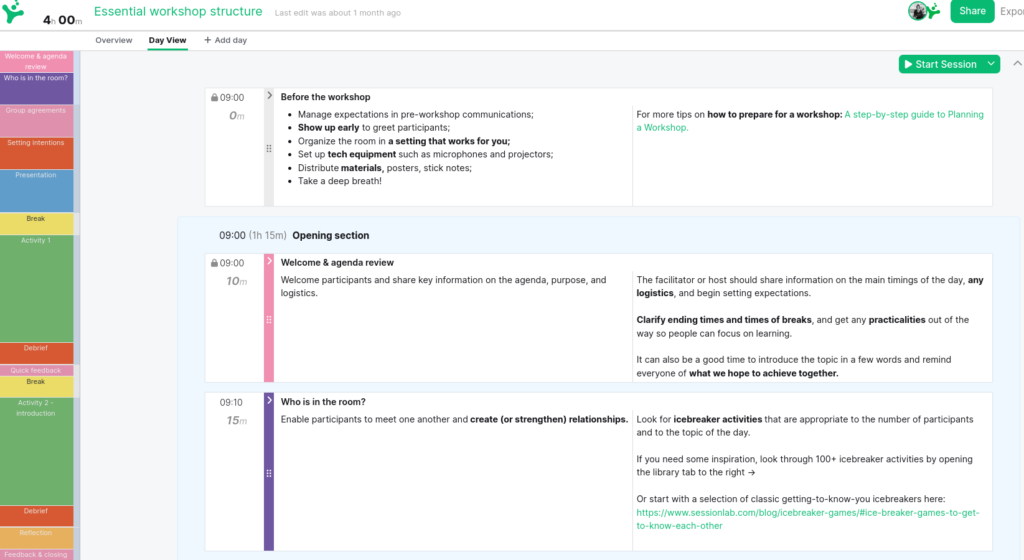
Facilitation skills for running a meeting
After proper preparation, the most exciting part of a facilitator’s work is actually running and managing the session and guiding people through the process. Let’s see what facilitation skills a facilitator needs here.
Create an inclusive environment
Participation from all group members is essential for a well-facilitated meeting. One of the most important things you can do as a facilitator is to co-create an atmosphere that encourages participation. This comes partially from your session design: include ice-breakers and get-to-know games to help people open up and start speaking.
Another part is ensuring that the room’s setting supports active contributions from people. Meaning, make sure everyone can see each other and removing barriers from the room (this is even more important in hybrid meetings, where part of the group is in the room and others join online). Group facilitation is hard if the group can’t hear one another!
Inclusion is also modeled in how you behave towards the group. A skilled facilitator will validate different opinions, ask curious questions, and look for ways to include quieter people in the discussion (e.g. by inviting written contributions, paired conversations, activities where speaking in turns, going in circles, and so on). A diversity welcome is a great way to start a session aiming for inclusion!
Communicate clear guidelines and instructions
While you designed the agenda for your session, you probably clearly envisioned how group members will act during the facilitation activities you planned. Now that you are in the room with the group, you also need to clearly explain what you are asking from them. Effective facilitation is predicated on clarity. Here are a few practical tips to help:
- Explain why certain activities are useful.
- Set ground rules for participation and communication.
- Clearly and sequentially explain the steps participants will take.
- Be clear about time constraints.
- If possible, show an example of the type of output you are asking participants to create.
- Show instructions in a visual form for all participants to see (e.g. pre-write instructions on a flipchart paper or on a slide.)
Skills to moderate conversations
There are a number of basic techniques and simple verbal tools that a facilitator should be able to use confidently at meetings in order to facilitate discussions, engage participants and make sure everyone is involved.
This is the aspect of facilitation that includes moderation or “directing traffic” skills and these can have a massive impact on a team’s performance during a session.
- Probing: Probing is used to determine the mood or general opinion of the group about a certain topic or point in the discussion. Just asking for a “thumbs up-thumbs down” survey can be enough to get an impression of the general opinion of the group.
- Paraphrasing: Paraphrasing means to express the same content that was just stated before but in your own words in order to check that both you and the others have the same understanding.
- Redirecting questions or comments: Redirecting a question to the group helps get participants more involved in the discussion. In addition, it also encourages group reflection.
- Bridging and referring back: This helps the group follow the discussion and to connect ideas by recalling earlier discussions or ideas.
- Shifting perspective: If the group gets stuck at some point in the discussion, try to shift the perspective and look at the problem from a different angle.
- Summarizing: Repetition promotes understanding, and summarizing what has been discussed so far will help participants build upon the conclusions they have already made.
- Giving positive reinforcement: It’s important to encourage people, especially those who are less assertive, to state their opinions. Therefore, when someone brings up a good point, say so, thus showing his/her participation is appreciated, and later on he/she will feel confident enough again to bring up another idea. Don’t forget that body language also has a part to play here!
- Including quieter participants: Encourage less talkative members to contribute to the discussion. Ask directly for their opinions and ask if they have any questions. At the same time, keep in mind that people do have different learning and thinking styles and may not feel comfortable if they are ‘encouraged’ too much. A facilitator needs to be alert to the needs of different participants and help everyone move forward together.
Conflict management
The ability to handle and diffuse tension is a skill that sets expert facilitators apart from others. Group facilitation is often exciting and productive, though differences of opinion can form in workshops or meetings you might be facilitating. A good facilitator isn’t someone who actively avoids such differences but embraces them, and uses a combination of critical thinking, active listening and other skills to help a group navigate such differences.
Remember, the group has a goal, and individual differences will need to be handled to achieve that. Given the time and scope of the session, not every interpersonal difference can or should be resolved; however, it is important that you know the right techniques and group processes for diffusing tension. Sometimes this might mean breaking up the work into smaller groups, taking a break, shifting perspectives or changing the scenery, etc.
Handling challenging situations
Dealing with conflict-stacked situations is among the biggest challenges to effective facilitation. Often, there are underlying conflicts behind disagreements taking place in a conversation, even in small meetings. The facilitator role often means being attuned to this possibility and responding appropriately.
You might also encounter participants who express challenging behaviors. People have reasons for behaving as they do, and if you don’t make an effort to understand their stance, they might keep playing hardball in the session. Balancing attention to individual needs and to the whole group can get tricky!
At certain times, you may be better off trying to speak to that person in private to discover what drives them, and at minimum, give feedback to help them understand how their behavior affects the group. Interpersonal communication is again an important part of effective facilitation and ensuring you have these facilitation skills can make your job in a workshop much easier.
Consensus-building skills
Different points of view naturally emerge in a discussion. It is the job of the facilitator to help the team find common ground among different opinions, simultaneously helping the group arrive at a decision that is accepted by everyone. Consensus, in this context, does not mean that everyone must agree with the final decision but that everyone gets an opportunity to share their opinion with the group, and that people are aware of the reasons why a particular decision was made.
In other words, this is called creating a transparent process. For instance, if you choose to use simple dot-voting as the technique to come up with a set of the most preferred ideas after an idea generation activity, then everybody should be made aware of why only those most popular ideas will be considered further. In that way, everyone understands the process that leads to a final decision. (Setting ground rules at the outset is a great way to make this clear to everyone in the room!)
Time management
Meetings have time limits. This is especially true in effective and productive organizational cultures. A carefully crafted agenda must take into account how much time can be allocated for each activity during a session.
Part of the facilitator’s role is to guide the group in timely conversations and decisions and stay focused throughout. It is important that you are aware of the passing time during a meeting and that you let participants know when time is running short for an activity. In general, effective facilitation assumes efficient timekeeping, with only well-grounded exceptions for going overtime in discussions.
If you are facilitating a meeting, participants will assume the timekeeping role is 100% up to you. But you can also decide to share the burden of facilitation with the group, for example by assigning another person to be the timekeeper.

Record outcomes
Recording key takeaways of a conversation is essential for keeping group progress on track and avoiding circling back to the same topics. As a competent facilitator, you should make sure to capture and highlight the key messages – whether that is via visual recording (i.e. arranging post-it notes, sketches, etc. made by participants), or written records (i.e. writing up conclusions).
You may also ask a participant to assist with minute-taking or have a dedicated visual practitioner to capture outcomes. All the insights recorded will provide a useful baseline for action-setting and follow-up.
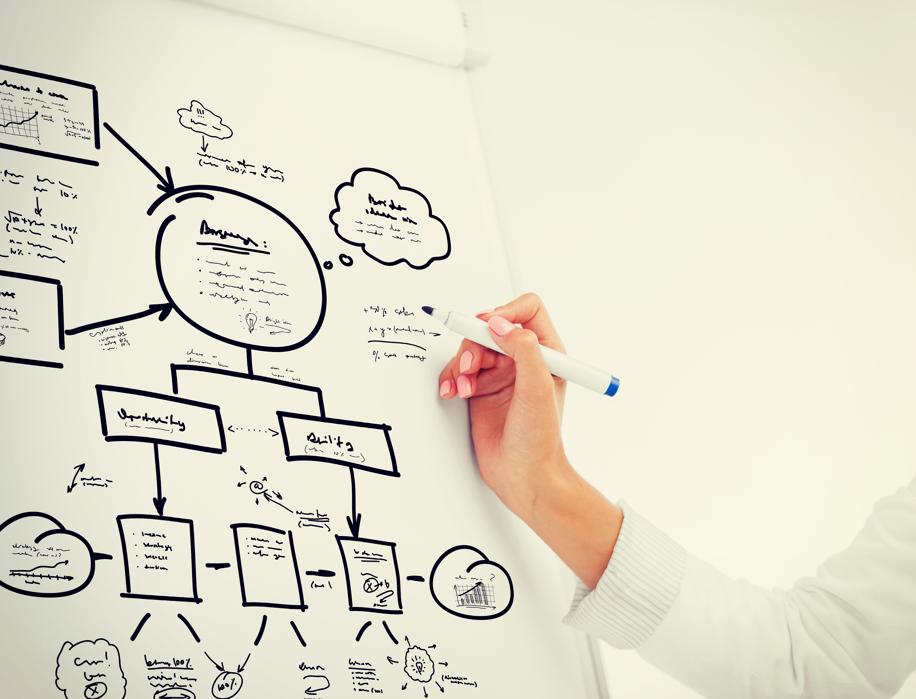
Facilitation skills as life competencies
Life competencies are clusters of related skills and abilities that enable a person to act effectively in a real-life situation. They are more complex than the practicalities of managing a meeting or a group of people, but the good news is they can be picked up and practiced in all sorts of situations.
Here are some of the higher-level skills practiced by facilitators:
- Active listening
- Project management skills
- Communication
- Group dynamics and group management
- Sensing the energy level in the room (and adapting to it)
Active listening
A basic condition for an effective conversation is that people feel they are being heard and listened to. Active listening is one of your best group facilitation skills and it is often the foundation for a productive discussion.
Practice your active listening skills as a facilitator, and encourage all participants to do the same. Also, basic verbal tools, such as paraphrasing, referring back and summarising help a lot to show the group that their thoughts are being heard. A facilitator understands that being an active listener also means using positive feedback to encourage quiet people to get directly involved in the session. If you were to work on improving just one facilitation skill, this is a great place to start.
Project management skills
There are numerous minor tasks and to-dos on the logistic side of preparing a workshop. In some cases, you may get a helping hand from the client’s side, and someone will help you to have everything arranged as you have designed and requested. In other cases, you might need to do this alone step-by-step, checking that everything is going fine with the logistics and pulling the right strings when something is needed. Whether you run a dedicated planning session for your workshop or communicate with clients and participants over email, staying organized is an important job you can’t afford to miss.
Getting the room properly set up for a meeting is important. So is having catering arranged in order to ensure food and drinks are available during breaks, and having the right workshop equipment at hand. This can be easy to overlook, but ensuring you get this right is part of facilitation best practices. Missing a vital piece of equipment can be frustrating or stressful and make group facilitation more difficult.
Communication
In most cases, it is necessary to inform the client about the process that you are planning, and, in general, to maintain steady communication to make sure that all preparations go smoothly. The best facilitators are in contact with their clients throughout the process and may even get in contact with some of the participants. Good communication at all levels is absolutely integral for a good facilitator and anyone involved in group facilitation.
Most of the time your client will have a natural interest in knowing the process and agenda for your meeting. They will have a number of people attending the workshop – meetings and workshops can be particularly expensive if you consider the time value of the people present – and they want to be assured that the group will be in good hands. Therefore, it is important to keep your clients updated throughout the design process for their peace of mind. This also offers a chance to get further insights about the goals and the group, helping you to come up with the right session design.
Setting up an effective workshop will require meetings with a hosting team: here you can find a ready-made template to help you steer those conversations and make sure you have everything you need!
Group dynamics and group management
Any group of people has its own dynamics dependent on the specific interrelations between its members. As a facilitator, you want to create a participative atmosphere where everyone is involved. Paying attention to the dynamics of the group and how individuals participate is important to any group facilitation scenario.
Being familiar with some group dynamics frameworks, such as the 5 stages of team development as defined by Bruce Tuckman, can help you name what is going on in the room and suggest the type of activities that will most help the group move productively through the various stages, from forming to performing and beyond.
You will need practice to master the skills of picking up on the atmosphere, measuring the emotional temperature, and helping the group achieve its potential.
Sensing the energy level in the room (and adapting to it)
Some activities require more attention from participants, some require less, but no individual will maintain the same level of attention and energy during a full-day workshop. And that’s alright. As a facilitator, you should have a good eye for spotting when the group’s attention level as a whole is getting critically low.
You can make sure to design sessions with varying group activities to keep people engaged, and give regular breaks every 90-120 minutes at least. If you sense motivation dipping, try some energizer activities to instill energy in the room. Other times, what is actually needed is more akin to a moment of grounding, focusing, or quiet personal reflection.
Outdoor activities, including sending participants for a brisk walk, can do wonders, and so can a well-thought-out use of music in a workshop (including online!). An excellent facilitator develops a sense of what the group needs and has a suite of team building activities they can employ at a moment’s notice too.
Facilitation as a mindset – the heart of facilitation
At its core, facilitation is about holding a group process as participants navigate deep and shallow waters, turbulence and calm. Methods, tools and frameworks will in and of themselves help improve your events and meetings. But reaching breakthroughs and achieving higher potential takes more than that.
A highly skilled facilitator embodies certain qualities in their posture and body language, in the tone of their voice and the micro-expressions of their faces. They bring calm, clarity and purpose to a room. Yet, even such subtle facilitation skills can be practiced. In the next part we will look at some elements of the facilitation mindset (the “heart” of facilitation) and tips on how to practice them.
Curiosity
Curiosity is a core element of a facilitation mindset. If there is a lot of chatter in the room, or a heavy silence, or someone presenting a challenging behavior, a facilitator’s knee-jerk reaction should be to be curious about it. What is happening? What is this telling me about the group in this moment?
Practice curiosity during meetings by imagining any disturbance or difficulty as a messenger bringing you an important bit of information about the group. Are we in need of a break? Is there an unspoken issue to be brought into the light? If you notice something of this sort, you do not need to take upon yourself the whole responsibility of solving the problem. Naming what you think might be happening and “throwing it back” to the room as a question for the group is a very typical thing for an effective facilitator to do.
Trust
Facilitation is about believing the group has the tools and skills needed to solve its own problems. Trusting the group can be difficult, especially if you are also an expert in the content, or perhaps a manager, and feel you might have some answers yourself. If that is actually the case, there is nothing wrong with providing ideas and opinions, but you should make sure you are well aware of when you are “wearing the facilitator’s hat”, so to speak, and where you are putting it down to take on another role.
A good facilitation game to practice trust is the Human Knot. In this fun exercise, participants literally tie themselves up in knots; besides giving instructions, your only role as facilitator is to believe that the group can do it (they will) and tell them so. When we hear someone believes in us and our own ideas, we can achieve incredible things!
Practicing trust has a lot to do with practicing listening skills. If you catch yourself thinking something along the lines of “This group is hopeless, they will never solve this!” step back, observe, look for what is working well in the group, and take notice of what happens. Be prepared to be surprised!
Flexibility
Facilitation is a dance of improvisation and structure. You have a set agenda and activities you want to go through, and it’s important to make sure you reach your objectives. At the same time, you are working with living, breathing human beings: what actually happens when we gather is always a bit unpredictable. Facilitation skills include being able to sense what is going on, ask the group questions, and change course based on what is happening at the moment. This is part of why so many facilitators have some training in improv theatre!
Planning a good process for an event will help you immensely. Being prepared means you will confidently be able to handle unforeseen situations and adjust the pre-planned process more easily as necessary. Usually, activities and discussions end up taking more time than initially planned: the group might need more breaks; new agenda items may pop up; and so on.
As a facilitator, being able to adapt on the fly is an essential skill, and it is also necessary to communicate and confirm the potential changes to the agenda with the group. At the end of the day, as a facilitator, you are helping a group achieve the common and agreed-upon objectives they want. So, if there are any changes in the desired outcomes, they should be agreed upon by the group. Co-facilitation is immensely helpful with improvising and adapting. Having an extra person as a sounding board allows you to check in with one another, see if you have noticed similar patterns and needs, and ideate changes together.
Neutrality
Neutrality is at the core of facilitation yet, at the same time, it is one of its trickiest principles. The idea here is that the facilitation should stay neutral on content while being an expert on process. It’s not about your ideas, it’s about supporting the group in achieving what they want.
However, there are situations when a facilitator does have a natural interest in the content. After all, one cannot bring an external neutral facilitator for every single meeting in the world. If for any reason you are not content-neutral as a facilitator, you should be clear about this with the group from the beginning. Try to make it explicit when you are wearing your ‘facilitator hat’ and when you are using your ‘participant/content-expert hat’.
Another way to look at the idea of neutrality is to remember that it doesn’t mean “not having a position” but rather having the very special position of “allowing and enabling all positions”, or being “multi–party”. Practice this by getting involved in processes and sectors which you know very little about!
Self-awareness
Group processes are human and messy (even when you know the frameworks and are proficient in group dynamics!). People, including the facilitators, get triggered. Misunderstandings arise. Someone hijacks the meeting for their own purposes. Clients get nervous. The projector stops working. Shit happens.
Being aware of our own responses is key to keeping our cool in such situations and, thereby, staying helpful to the group. Self-awareness also means creating your own set of principles, values and skills that are important to your own facilitation practice.
Practice self-awareness by reflecting and debriefing after any facilitation experience. The effective facilitator is one who is always learning. You can do it on your own, preparing your own template of reflection questions (what went well? What would I do differently next time?), asking for feedback from participants and getting peer feedback or mentoring from other facilitators.
How to improve facilitation skills
The best way to get better at facilitation is to practice, practice, practice! Over hundreds of hours of meeting facilitation, you will encounter a myriad of different situations in group dynamics: heated debates, opinionated participants, challenging power plays, as well as happy teams, effective meetings, increased opportunities for collaboration, and creative breakthroughs. The broader your facilitation toolbox is, the more skilled you will be in applying the right processes to guide each unique group’s thinking.
There are a few ways you can accelerate your learning in the realm of facilitation and to go from being a good facilitator to a great facilitator:
- Participate in facilitated spaces. Finding opportunities to watch other facilitators on the job is a great way to learn and to understand what type of methods and styles are right for you. Take part in workshops, even if the topic is not very familiar to you, to see how others work. The International Association of Facilitators has a calendar of live and online events you can attend.
- Join a community. Facilitation communities are on the rise. From our own SessionLab community to experimental spaces like NeverDoneBefore, facilitation communities were quoted by facilitators as one of the best places to stay updated and learn new skills, based on the State of Facilitation report. You can also get together with a few interested people around you to form a peer group and support one another in your learning.
- Co-facilitate with experienced facilitators: On-the-job learning from seasoned veterans is probably the most effective way to level up your skills. Strive to design facilitation processes together with other facilitators, and you will encounter different perspectives on how to design an effective group process. Co-facilitate discussions, and you will gain first-hand experience in observing how different strategies work to manage conversations.
- Explore new tools and techniques: Keeping an open mind and staying ahead of the curve is important. Find time to learn and experiment with new tools and techniques to stay up-to-date. Read books, watch videos and share best practices with colleagues. SessionLab’s library of tools and facilitation newsletter are great ways to start!
- Get trained (and potentially certified): You may consider attending a general facilitation training, or get trained in specific facilitation frameworks or facilitation skills. The State of Facilitation 2023 report revealed a surprising multitude of options to get trained on specific methodologies, as well as clarifying that there is no single pathway to becoming a facilitator. Facilitators come from all sorts of backgrounds and walks of life! Whether you are a beginner or professional facilitator, facilitation training can help you grow and refine your practice.
At the end of the day, facilitation is more of a craft than a science. The more you do it, the more sophisticated your skills will become! Reflecting and debriefing on what you noticed others do in their facilitation practice, as well as on your own skill development, is essential to improving your skills. In many ways, the best facilitation training is being on the job as a facilitator.
Facilitation resources
Now that you have more clarity about what facilitation skills are, let us look through three useful pathways to delve deeper into facilitation resources:
- The International Association of Facilitators has developed a competency framework and a code of ethics to support facilitators and clients. These revolve around 6 core competencies, in which you will recognize facilitation skills in action:
– Creating Collaborative Client Relationships; Plan Appropriate Group Processes; Create and Sustain a Participatory Environment; Guide Group to Appropriate and Useful Outcomes; Build and Maintain Professional Knowledge and Model a Positive Professional Attitude as a Process Facilitator. Reading through the framework is an enlightening way to understand what facilitators do in practice and what skills they apply. - Read through the State of Facilitation in 2023 report for insights on what facilitators do to stay current, ideas on what communities to join, tips on favored podcasts and books, and an overview of what the profession looks like today.
- Here at SessionLab we have created two email courses, Facilitation is for Everyone! and Overcoming Facilitation Challenges, which you can sign up to (for free) to receive inspiration and facilitation stories straight in your inbox. Read more on all the resources we’ve put together to start your facilitation journey here!
Over to you
Are any important facilitation skills missing from the list above? Do you have questions about something not covered in this post? Join the conversation in the comments or in SessionLab’s friendly community space!
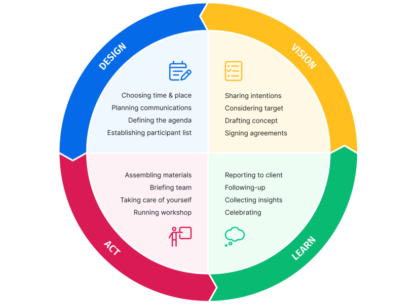
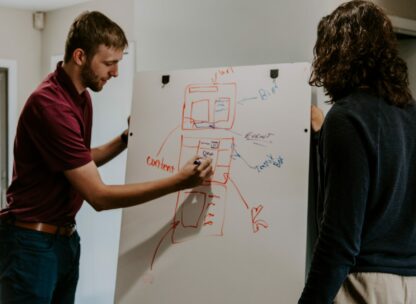

I have yet to read a more comprehensive, systematic and immediately applicable article on Facilitation! Invaluable! Thank you ????????????
You’re welcome, Franklin! I’m really glad that you’ve found the article useful!
This is a very good article. It responds to most of the questions I get for prospecting people to the Association of Facilitators. Thank you.
That’s great to hear, Jeanne! I’m glad to hear that you’ve found it useful :-)
wonderful article, i have understood the accountability, transparency and its systematic ideology of knowing a facilitator owes and often it encourages in orgonisations…
Thank you for sharing your thoughts, Chance, great to see that the article inspired some further reflections :-)
Excellent knowledge that is spot on!! Appreciate the effort behind this.
You’re welcome, Chandan, awesome to see that you liked the post!
Super interesting article and the links to toolkits! much appreciated. Thank you so much
You’re welcome, Anna, great to hear you’ve found it interesting!
Wonderful article,thank you!
You’re welcome, Neda!
This blog post of facilitation skills is excellent! Thank you.
Michelle
That’s great to hear! You’re welcome, Michelle!
thanks for putting great taught together. i now have deep knowledge on facilitation i will be using most of ideas in engaging my staffs
You’re welcome, Idirssa! Wishing best with your next sessions!
Hi Robert, your sharing is very practical. May i share it with my team of business leaders as we are asking them to become our internal trainers. Very challenging….
Thanks in advance.
You are more than welcome, Joseph – glad to see you’ve found it practical!
Hi, Robert! The article is very educative and will go a long way in helping my work. Bravo.
Abdullahi Kirim.
Awesome – happy to hear that it helped! :-)
Robert,
Thank you for the helpful ideas. My experience is that facilitating when there’s a team with a well-understood, shared culture and goals is one thing, facilitating an ad hoc group of (e.g., citizens) on an issue, such as zoning requirements, is different. Two skills I think are required are: a) Either having subject knowledge or being adept at “learning the case” (i.e., becoming knowledgeable enough to make reasonable judgements as you guide the process); and b) Understanding the fundamental principles of “social learning” — the iterative exchange of knowledge between subject “experts’ and the most critical stakeholders.
The “social learning” process takes time, but enables the stakeholders to a) become empowered to influence the outcome, and b) more able to contribute well-informed opinions or ideas. Equally important, it enables the “experts” to absorb an understanding of the context (both concrete and social) so they can offer better advice.
I’ve watched way to many City planning processes go nowhere (or blow up) because a) the City staff hired a “neutral facilitator” who wasn’t neutral to begin with and whose professional obligation is to the City Planning Director; and b) the facilitator couldn’t provide productive meeting processes because she had no clue how comments were related, relevant or within reasonable sideboards.
In addition, neither the staff nor the facilitator had any understanding of the importance of “social learning” so very little exchange occurred.
Thank you, Paul, for sharing your perspective – I find your example super relevant to illustrate that being neutral as a facilitator is not the same as not being knowledgeable on the subject of a session. In fact, without thoroughly understanding what the group talks about, it’s nearly impossible to steer a discussion in a productive way!
Great thoughts about being aware of the social learning process – yet another important aspect of a facilitator’s skillset!
This article on Facilitation Skills is simply awesome. Thank you so much for providing essential insights on Facilitate Skills.
Happy to hear you’ve found it useful, Suren – wishing best with your next sessions!
thanks
Simply awesome article on facilitation skills.
Thank you, Subina, glad you liked it!
Great Information and very detailed.
You’re welcome, Harry, great to see that you liked it!
Hi there. very good guide for facilitators.
Thank you, Aluma – great to see you’ve found it useful!
This has been so useful to me. Allow me to share with my group of upcoming facilitators in family planning workshops.
You’re more than welcome, Hawa – great to see you’ve found some useful nuggets of insight here!
Your article is amazing! It captured all of my questions for transitioning from trainer to facilitator! This will be my go to as a guide.
That’s fantastic to hear, Paula – happy to see you’ve found this useful!
Hi Robert- this is so comprehensive and compact! May we use it for our Facilitation class this Spring at the University of Oregon? Thank you!
Happy to hear you’ve found it useful, Devin, you’re welcome to use it as a resource at your facilitation class!
This was an excellent read and is SO informative!!! So much information here that I needed and some things that I had not thought of. Thanks for this!!
You’re welcome, Lisa, great to see you’ve found the article useful! :-)
best on topic which I came about. Thanks
Great to see you’ve found it useful, Danie!
this facilitating process is clear and understandable thank you so much
Excellent article! You’ve clearly articulated so many of the foundational pieces of preparing and facilitating a group.
Thank you, Stephan!
Very useful article
This is amazing article and more indepth, detailed learning that i have come acrossed about facilitation, infact i have learn some basics, i appreciate the efforts here, thank you!
You’re welcome, Judith – great to see you’fe found it useful!
Crisp & comprehensive,I found this very, very useful as I embark on a training for academicians who now need to shift from lecture mode to facilitation mode.
Have you done any facilitation work in the teaching /academic context?
Thank, you Sindhuja, great to hear that you’ve found the guide useful. (As for your question, all my facilitation experience was in for-profit and NGO environment, so not in academia. Nonetheless, I believe that as long as the role of a facilitator is to lead/guide a group through a process to help achieve what the want, the skills and approaches above are valid for both context)
I love your site. My thanks for sharing such a good post. I was looking for thoughts on this topic last Thursday. I will come back to read more and inform my coworkers about your site.
Dear Robert,
Great and comprehensive article! Thank you! I just want to share with you how I structured the facilitator role when I trained facilitators (the specific skills were assigned to the specific role)
The question I answered was: what processes is the Facilitator responsible for, in order to make groups work in an effective way to achieve their common goal?
• Team Building Process
The Facilitator encourages the group members to know each other better, to cooperate and develop positive relationships in order to work together.
• Group Communication process
The Facilitator helps group members communicate effectively by overcoming communication obstacles, avoiding misunderstandings and conflict escalation
• Group Decision Making Process
The Facilitator helps group members make decisions in an effective way
• Participatory Planning Process
The Facilitator designs and guides the group members thinking through the logical path of the planning process stages. The Planning Process Stages logical sequence can be designed in different ways, depending on the context, the time available, and the complexity of the problems to be addressed.
I would need to use some schemes in order to show you the logic proposed when designing different planning/problem solving processes. If you give me an email address I can share one brochure I developed where this role (which is not mentioned in your article) is described.
Hi Robert,
2 questions:
– Are there some other skills that a facilitator must have for running online workshops effectively (to be added to the list).
– which skills would you put emphasis on among the list of skills mentioned in the article when the workshop is virtual?
This is one of the best articles I have read. Enriched me with a lot of knowledge.
Awesome! An excellent article on introduction to facilitation. Great learning!
Great article. Very comprehensive. Do you provide training to organizations on how to facilitate meetings? We are considering having HR professionals receive training on how to facilitate meetings as part of our Diversity, Equity and Inclusion program, so they can effectively facilitate topics that may generate a lot of passion with differing points of view.
Great insight on facilitation skills Robert . I have been a practitioner for over 30 years and have learnt these skills the hard way .
Hi Mr. Robert, Superb article, it is simply awesome, If possible please help me with this
how facilitation skills used in different training groups such as:
1) executive trainees (management trainees) 2) mid-career trainees 3) in-house training 4) open training programs? What are the different skills to be used?
Robert, you did an extremely excellent job, hats down in your art of turning a novice into an expert, skillful facilitator.
Thank you, Johannes – great to see you’ve found the post useful!
Very informative and useful content! Thank you for the post!
Great work. I’ve found the article very rich and useful ????
How cool! I completely agree with all the other comments on the high quality of this article. It is soo good. Thank you for sharing. :)
You’re welcome, Kay – great that you found it useful :-)
Dear Robert,
Very meaningful and a great article on Essential Facilitation Skills. Highly informative and has covered all the aspect in depth. Thank You for sharing.
Regards,
Renjit Mathew
You’re welcome, Renjit!
Hello Robert, great piece to read and is so very helpful in every form.
Just a question: What according to you are three most important skills related to group facilitation and how do you think they can be best applied in a group?
super super super…article.
For me, it will be kept handy as a “ready reckoner”.🙏🙏🙏
Hello Robert,
What an inspiring “discovery” it has been to run across this most helpful article and walk-through on the ever-relevant topic of effective facilitation.
I just finished the digital invitation to a “Facilitators’ Workshop on Empowering Facilitation” (in Scandinavia) – and ran across SessionLab via my news stream.
I am encouraged to see how in-depth and ‘practically applicable’ you and your team have elected to remain in covering key topics related to the subject.
Thanks a million, and much Kudos to you for such a superb effort and offering!
Warmest,
Kristen L. Skogrand
Co-Founder & Senior Facilitator
EmpowerED.How (coming in Nov.:)
Hi Robert,
this is a very informative article and thank you so much.
This is a great article.
Thanks for sharing these insights into the art of facilitation. It’s something I’ll keep referring to as I develop my skills.
5 years on this article is still being shared and read and is still excellent – thanks